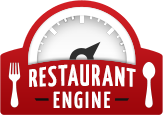7 Steps to Opening a Second Restaurant Location

Is your restaurant ready for a second location?
Is it time to think about a restaurant expansion? Are you ready to open a second location?
The decision to take on a second restaurant location is an important one. It’s not the time to rush in quickly. While your first restaurant may be a resounding success, your second location’s success is not guaranteed. It can be fruitful if you put in the same research and dedication you put into opening your first restaurant.
To gauge your readiness for a second location, ask yourself the following questions:
- Are you so busy you can’t handle the crowds?
- Are your customers eager for more?
- Do you have funding?
- Will opening another restaurant increase your capital?
- Are you willing to put in the hours?
If you answered yes to most of the above questions, you may be ready to tackle your restaurant expansion. In this blog post, we’ll give you seven steps to help you open your second restaurant location.
Step 1: Start with Capital
Your first priority is funding your second restaurant. (tweet this) You can’t open a second location without capital.
Will you use your own capital dollars to expand, or will you use sources such as loans or outside investors? It is a good idea to fund your second location independently from your existing location. Consider your new restaurant a separate business venture to avoid losing profits from your first restaurant.
How much money should you have? That depends on the size and style of your restaurant, but if it is similar to your first one, you can count on spending about the same amount of money. Before you open your second location, you’ll also want to make sure your finances are in order from your current restaurant. You’ll need good credit especially if you are taking out a loan.
To outfit your second location, you’ll need money for:
- Building lease or purchase
- Kitchen equipment
- Tables and chairs
- Lighting and Décor
- Food Inventory
- Restaurant and office supplies
Step 2: Pick the Right Location
You picked a good location the first-time around, so you know the importance of “location, location, location.” If your restaurant tables are full every night, your first thought may be a restaurant a few blocks away to handle the overflow. This would, of course, make it easy for you to manage. Just because it seems logical, doesn’t mean you should do it.
If you open a second location so close to the first one, you may limit your customer pool. You might find there aren’t enough people to fill both locations every day. You’ll have better luck spacing your restaurants at a greater distance apart.
Examine the restaurants in your proposed new area. Are they doing well? Is your concept unique to the area? If you want to open a second deli, but there are already three on the block, you’d find more success choosing another location. On the other hand, if you are considering opening a deli in a busy downtown area, and you observe that the other delis are full to capacity during the lunch hour, it might be a good area for your restaurant.
Spend time in the area of your proposed second location. You’ll garner an understanding of the area’s flow and activity so you can make an informed decision on your second restaurant’s location.
One restaurant entrepreneur says you should find out how many households per restaurant are in your potential neighborhoods because these numbers are also helpful in choosing a location.
Step 3: Create a Business Plan
You aren’t a newbie to the restaurant industry, so you know you need a business plan to start your new location. Make things easier on yourself by doing things the same way. That is, of course, if they worked the first time around.
Manage your growth and expansion by duplicating systems. Things run smoother if both of your restaurants use the same accounting and inventory management systems, technology and website platforms and HR practices. For example, you already have an employee handbook for location #1 – duplicate it for location #2.
Ensure consistency and quality control at both restaurant locations. (tweet this)
Step 4: Write and Execute a Marketing Plan

Is your marketing plan ready for two restaurants?
You need to market your second location with as much fervor as you marketed your first location. Take a look at what worked and what didn’t when marketing your first restaurant. You can duplicate the successful marketing tools.
Depending on your location and target market (it may be different from your first restaurant), you’ll need to write a marketing plan unique to your new location. You also need new printed materials with your new address. If your concept is the same, you can add your new location to your current website. If it’s a different concept, you’ll need a brand new website for your second location.
Step 5: Hire the Right Management
Once you open your second location, you’ll have twice the staff, twice the customers, twice the problems, twice the finances. While you might like to manage both locations by yourself, reality dictates you won’t have time to handle the day-to-day operations in both places. You won’t be able to be at either location as much as you were at the first.
Leave a current manager in charge of your first location so you can be at the new restaurant in the early stages of its launch. You’ll be better able to identify any problems and correct them. You’ll also convey the message that your new location is important to you. No one is going to care about the success of your second location like you do.
Be careful with your first location. If you are going to manage the new restaurant, make sure you put a manager in charge that your employees trust. Check in several times a week so they know you value your first restaurant and their skills.
Owning two restaurants is an immense amount of work. Delegate some of the responsibilities. According to the business owner’s toolkit, consider hiring someone to handle the tasks you may not be good at. This could be inventory management for locations, your finances, your marketing or your website maintenance and development.
Step 6: Hire Competent Staff
While you’ll need new employees for your second location, and that means interviewing chefs, line cooks, bussers, wait staff and hostesses, remember you already have a head start. Your first restaurant is a grand success, which means you most likely have superb staff members. Take a careful look at your current staff. Make a list of their best and least desirable qualities. Use this list to hire new employees.
Ask your current staff if they’d be willing to work at your second location for a short period of time. Use their expertise to help train your new staff. Additionally, have your new second location staff shadow your seasoned employees at your successful location.
Step 7: Purchase Equipment, Supplies and Food Inventory
You most likely have a good idea of your needs because you’ve already opened one location. These tasks may be easier now, but they’ll still take time. Don’t forget the things you learned the first time:
- Measure your space to ensure your appliances fit
- Measure your space when deciding on tables and chairs
- Use the same food suppliers
- Whether you’re leasing a furnished kitchen or starting from scratch, don’t forget to ensure your new restaurant meets all codes and zoning regulations and has the proper licensing
Have you opened a successful second location? We’d love to hear from you. Share your ups and downs using the form below. Our readers can benefit from your good advice.
Images: bloomsbury & Vox Efx


Leave a Reply